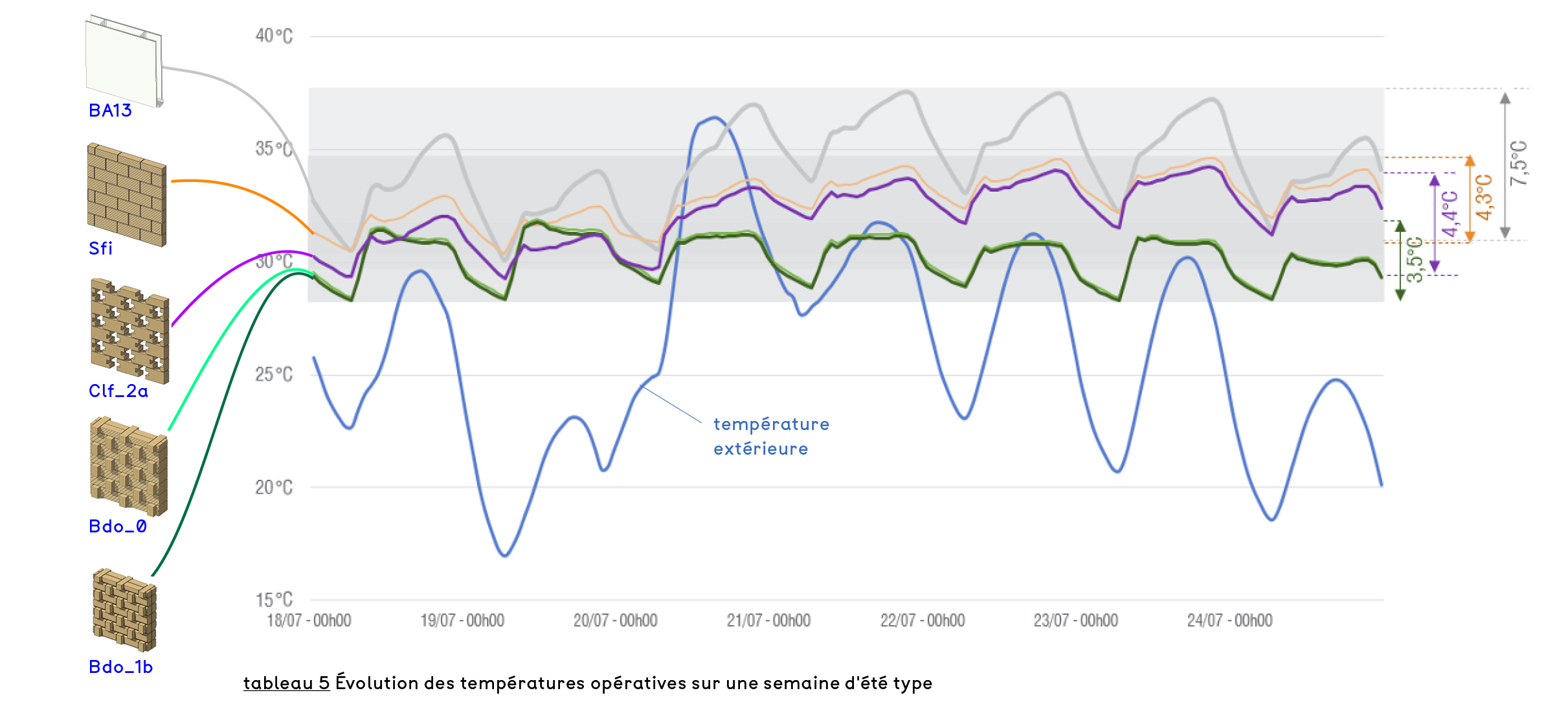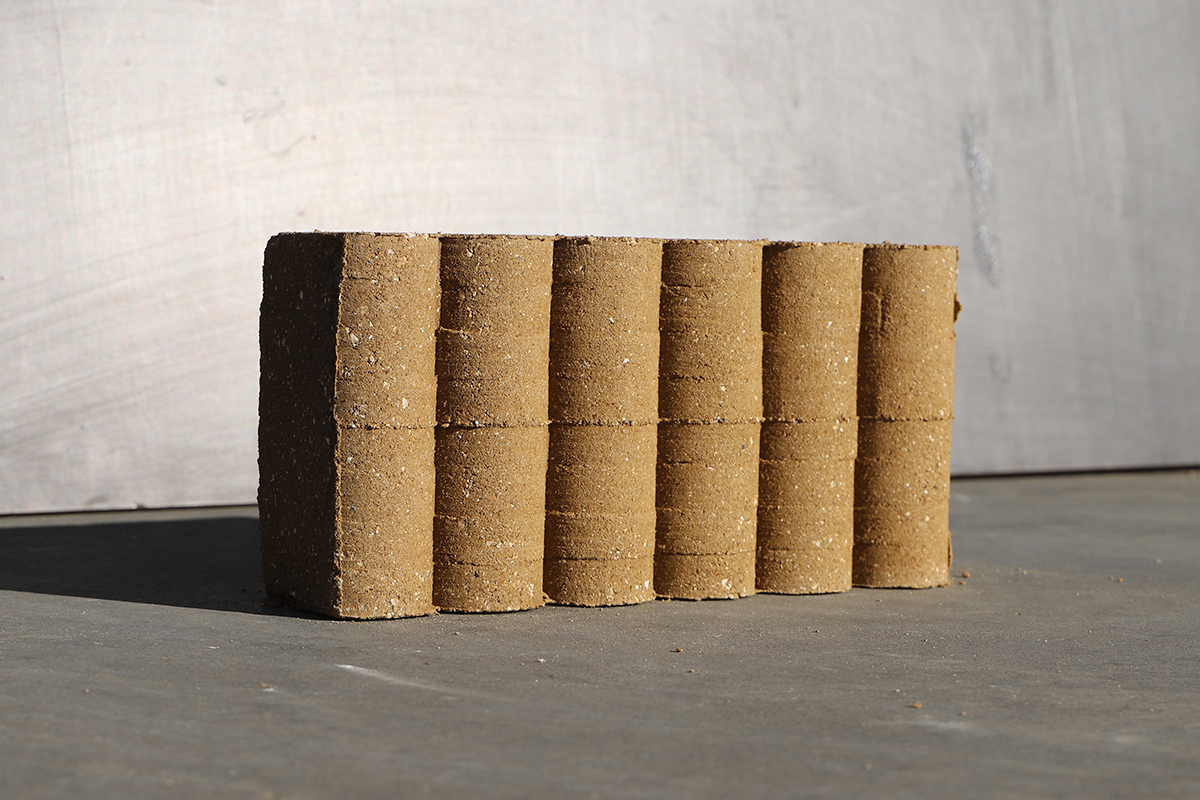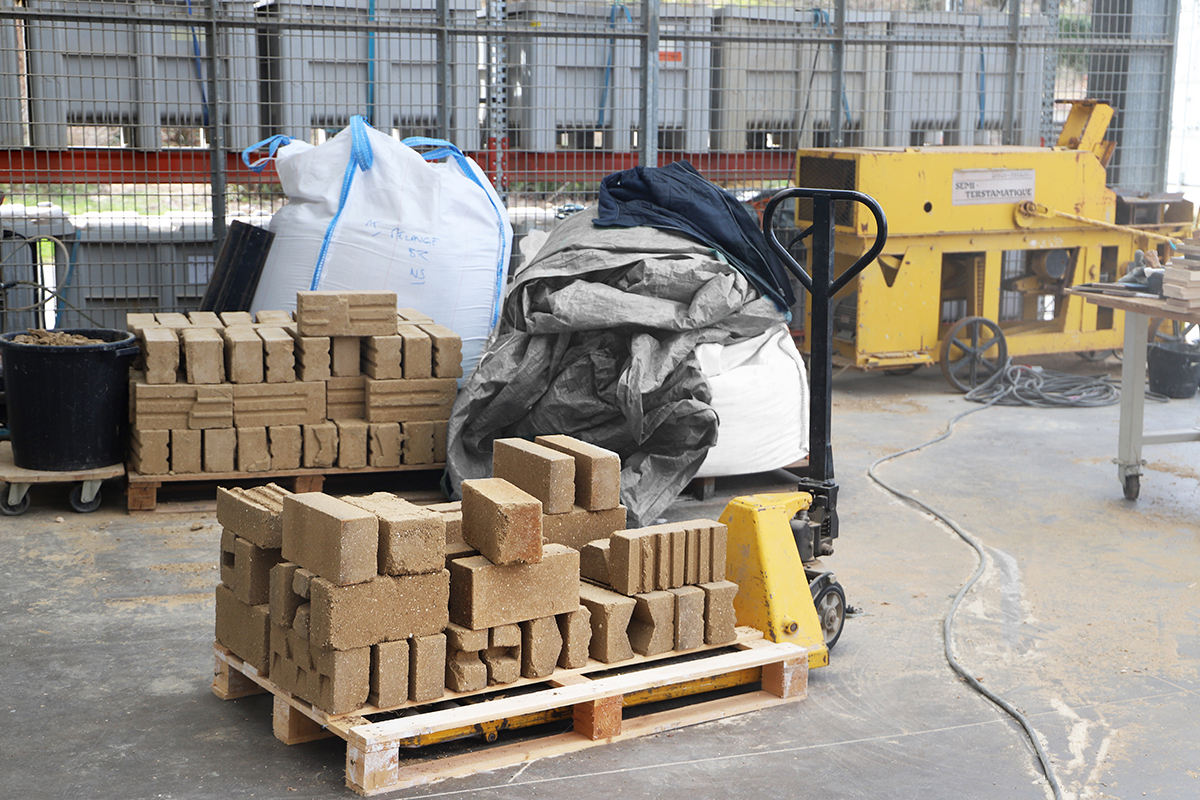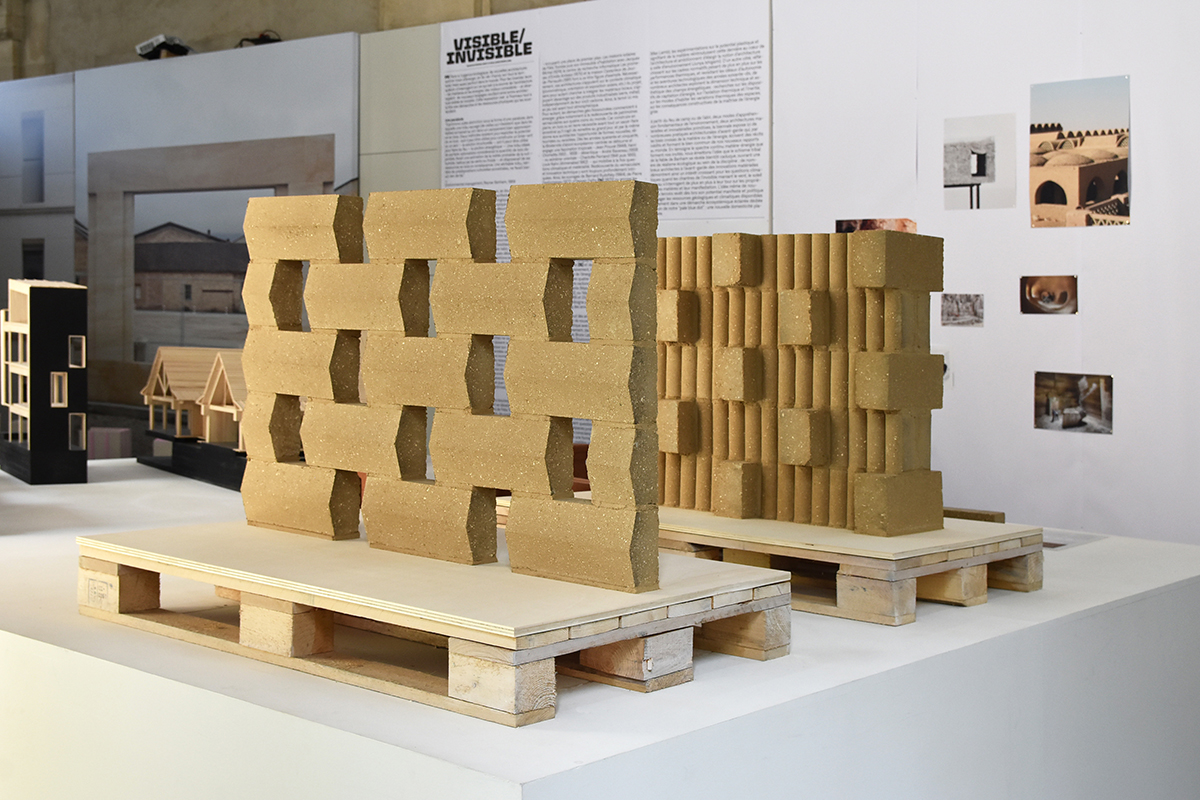The scarcity of resources, the search for frugality and economy sometimes lead to the creation of uncluttered, raw or even standardised atmospheres. Can ornamentation contribute to the hygrothermal performance of raw earth as a construction material and thus re-establish it in future architecture? In this research published in January 2023, Atelier Aïno, Franck Boutté Consultants and amàco study how unstabilised Compressed Earth Blocks, a virtuous material that does not require cement or firing, can offer new opportunities for buildings in the Ile-de-France region, thanks to the industrialised production of the Fabrique Cycle Terre in Sevran.
NOVEMBER 2022 : FAIRE CLUB
Meeting and presentation of the project by Louise Dubois, Atelier Aïno & Nina Mahe-Rome, Franck Boutté Consultants at the Pavillon de l'Arsenal, during the FAIRE CLUB on Monday November 7, 2022.
JUNE-JULY 2022 : ORNAMENT AND PERFORMANCE OF EARTH AT BAP
As part of the Biennale d'architecture et de paysage de Versailles, presentation of the first earthen brick prototypes in the exhibition Visible, invisible at ENSA.
PROJECT PRESENTATION
The new Cycle Terre factory in Sevran has launched into the mass production of BTC, while working to advance the regulations, in order to facilitate the use of raw earth in buildings in the Ile de France. The context of scarcity of resources, the need for frugality and the economy of the project can lead to the creation of refined, raw or standardised atmospheres. Can ornament find a place in this new ecological paradigm? Can it improve the performance of the material?
Principles and methods
The ornamentation was worked on at two scales: firstly on the surface of the block with a relief ornament, then at the level of the wall by the arrangement of the modules between them. The impact of these various partition morphologies on the thermal comfort of an exemplary dwelling was then measured, while quantifying the environmental impact of the material.
The ornaments developed follow three principles: increasing the volume, amplifying the surface area and working on the texture of the BTC - potentially aiming to improve the material's inertia, air/matter exchange and perceived sensory comfort. The fabrication of such ornaments was tested during a workshop with amàco at Les Grands Ateliers. Experimentation with the use of counter-forms, textures or inlays gave good results, and made it possible to rule out grainy or angular reliefs because they were too friable. The engineers then measured the effects of the various ornaments on the software, while comparing them to standard processes: plasterboard and concrete veil. In order to work at this level of detail, a new method of material description was developed to characterise the various wall morphologies as precisely as possible.
JANUARY 2023: Publication of the results of the Ornament and Earth Performance study
The comparisons made at this stage indicate that the most influential criterion is volume. This increases mass and therefore inertia, which on the one hand allows better regulation of temperatures despite variations in the outside thermometer and on the other hand limits hot environments in summer.
Impact of volume
Thus, during a typical summer week, the table below shows that the room atmosphere is much more comfortable with a very thick wall made of BTC (Bdo): the temperature is 4°C lower than with a standard BTC wall (Sfi), and 7°C lower than with plasterboard (BA13). The temperature regulation with BTC is also much better than with plasterboard, regardless of the morphology of the wall.

The influence of these criteria could be noticed under certain conditions (depending on ventilation, wall thickness, etc) but the results are complex to interpret. The technical limits of the simulations may have been reached here, especially the effect of air movements. However, the results obtained prove that volume is not the only influential criterion.
Impact of humidity control properties
BTCs stand out because of their hygroscopic qualities, which allow them to absorb variations in humidity and temperature. For example, over a week in August, BTC keeps the indoor climate within the comfort range over the seven days, whereas concrete goes outside the recommended range four times.
Environmental qualities
Finally, we recall the limited environmental impact of BTC: it is 2.5 to 6 times better than concrete or gypsum when comparing their carbon impact and the energy expended during their respective manufacture.
Prototypes to complete the study
The thermal and environmental studies led to the creation of two one-square-metre prototypes of ornamented BTC partitions, chosen for their contrasting characteristics: a thin perforated screen and a thick, highly bonded wall. In the next stage of the research, sensors could be fitted to the prototypes to measure their performance in vivo, to confirm the results obtained in this study and to overcome the limitations encountered.
Communication of the research, continuation of the project
Professional and public events have welcomed the research: exhibitions of the prototypes at the Biennale d'Architecture et du Paysage 2022 and at the Fabrique Cycle Terre, amàco training course on Building with raw earth masonry, conference at Ensa Versailles, etc. The research resonates with the building sector's infatuation with raw earth, an ancestral material that is now being rediscovered. The prototypes, with their tapered flutes or the lightness of the claustra, renew the rough or rustic image sometimes associated with the technique.
The team is now seeking to deepen its knowledge by pursuing research along the following lines
- instrumentation of prototypes to measure performance and complete the results (scientific approach)
- comparative structural and economic study of the impact of BTC in the construction of a building compared to standard materials (technical and operational approach)
- design of a specification for the creation of patterns as an addendum to the Atex, as this document is limited to BTC and standard equipment (technical and regulatory approach).



PROJECT TEAM
Atelier Aïno, architecture and materials
Atelier Aïno is an architects’ cooperative created in 2016 by architects Élise Giordano and Charlotte Lovera, as well as Louise Dubois, a materials designer. Involved in the circular economy, Atelier Aïno favors rehabilitation over demolition to reduce waste. The philosophy is “doing less” early into the project in order to “do less” later on, considering what exists as leverage and use the pools of resources that are already in place.
Franck Boutté consultants, environmental engineer consultancy
Franck Boutté Consultants is a leading, best-in-class consultancy firm active in the fields of design and environmental engineering and sustainable development as applied to buildings, districts, cities, and territories. The firm brings together engineers, architects, and urban planners, often from hybrid backgrounds.
amàco, expertise and consultancy in raw earth
Atelier matières à construire (amàco) is a research, training, and testing center for raw materials at the crossroads between scientific, technical, artistic, and architectural cultures. It aims to contribute to the ecological transition of the building sector. amàco’s core competencies are in earth characterization and formulating and developing new building materials made from raw earth.
Cycle Terre, manufacturer of building materials made from raw earth
Cycle Terre proposes reusing and utilizing excavated soil to manufacture construction materials that have low environmental impact. Since October 2021, the manufacturing facility located in Sevran, in the northeastern suburbs of Paris, produces a range of local eco-sourced building materials under a short-supply chain scheme, including compressed earth blocks, mortars, and coatings.
Since 2002, Les Grands Ateliers has been involved in raising awareness and training students and professionals in architecture, construction and design in bio- and geo-sourced materials, the ecological transition, collaborative work and the digital transition. The educational experiments and prototypes developed on the Grands Ateliers' equipped platform contribute to improving teaching and research in the fields of architecture and construction cultures and allow the emergence of relevant responses to the new challenges linked to eco-responsible design, adaptable to social, environmental and economic changes.



